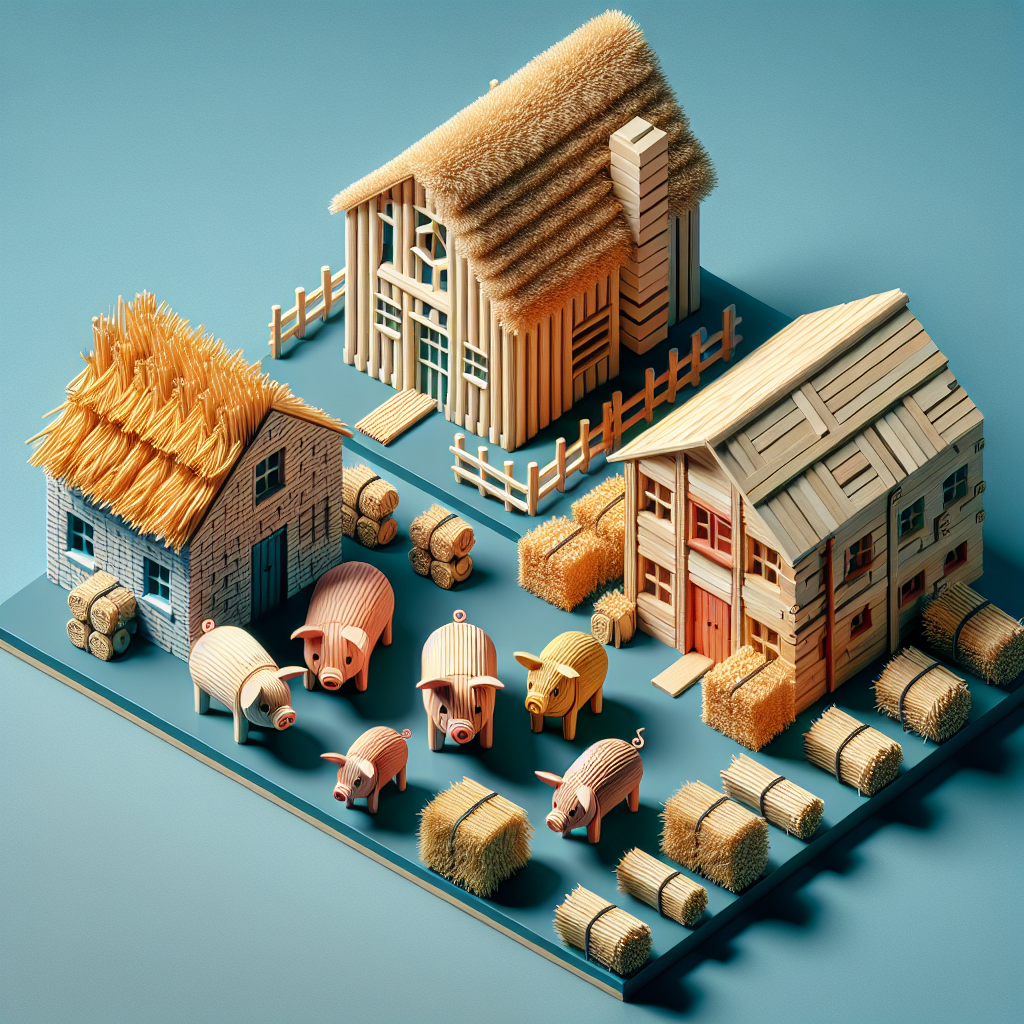Once upon a time, in a world where fairy tales and science coexist, lived 'The 3 L'il Pigs.' Have you ever stopped to unravel the layers behind this classic tale? Who were these pigs, what were they building, and why was it so important? This intriguing story, popularized by the Brothers Grimm in the 19th century, unfolds in an ambiguous European countryside where each pig sets off to construct a house - one of straw, one of sticks, and one of bricks. What may seem like a straightforward tale of household architecture is a narrative rich in its exploration of problem-solving, strategic planning, and the triumph of ingenuity.
The Foundation: What Can We Learn from Fairy Tales?
At its core, 'The 3 L'il Pigs' is more than just a children's story. This narrative has been echoed in various cultures and for good reason. It presents a captivating case study of risk management and decision-making. As each little pig ventures into the world to create their homes, they inadvertently become representatives of different approaches to materials science and engineering—a field that ignites curiosity and innovation.
The Architect's Toolbox: Straw, Sticks, and Bricks
Pig House #1: Straw
Our first pig makes a decision to build with straw. Considered the weakest of the materials, straw is nonetheless an intriguing choice. Historically, straw has been utilized as insulation in sustainable building practices. Yet, in the tale, it stands as a symbol of expediency and risk-taking without the necessary long-term durability. This pig exemplifies trial by experience—an approach that, while often resulting in breakdowns, is vital for certain understanding.
Pig House #2: Sticks
The second pig opts for sticks, providing us with an interesting middle ground. Sticks suggest a moderate effort, offering potential structural integrity while still being quick to assemble. This choice introduces the concept of elasticity and flexibility. Sticks can absorb wind energy more effectively than straw, reducing the immediate threat of collapse. Yet, as the story unfolds, it's clear that balance between effort and outcome wasn't suitably met here either.
Pig House #3: Bricks
Enter the third pig, whose measured choice of bricks illustrates the power of strategic effort and forethought. Building with bricks requires significant initial labor but their inherent strength offers long-lasting stability. In real-world construction, the thermal mass and fire resistance of bricks highlight their capacity to withstand extreme pressures, much like the famed wolf’s huffing and puffing. This scenario celebrates the value of foresight and perseverance—key human tenets that drive civilization forward.
The Big Bad Wolf: Challenges and Innovation
The wolf isn't just a threat to porcine housing; it represents any adversarial force that tests the resilience of one's creation. Whether it's natural disasters threatening our infrastructure or economic downturns destabilizing markets, the wolf's ferocity is comparable to the challenges every innovator and scientist must anticipate. His presence underlines the necessity for robust design and resilience in all aspects of human life.
The seemingly simple concept of a wolf becomes a metaphor for real-world obstacles, prompting a reassessment of strategies in risk mitigation and adaptive designs.
The Story’s Relevance to Human Endeavors
Understanding 'The 3 L'il Pigs' in our modern context reveals how timeless wisdom finds relevance across ages. The tale’s fundamental truths about resource allocation, planning, and societal roles resonate even more today. Modern society builds with both parsimonious and durable strategies and finds value in each, depending on context.
Innovating Beyond Narratives
While fairy tales may originate from ancient wisdom, they possess dynamic qualities—endless potential for reinterpretation and renewed meaning as science progresses. This is seen in modern applications such as bioengineering houses with straw to tackle environmental issues or in adopting 3D-printed bricks for sustainable city planning. Each pig’s choice offers insightful perspectives on sustainable practices and inspirational ideas, an ongoing testament to how literature can season the seeds of curiosity and knowledge.
Hope in Progress
This story is a celebration of ingenuity—the human spirit’s ability to transform simple raw materials into complex entities via science and innovation. It's a reminder of how each choice, innovative or traditional, risky or certain, contributes to the broader narrative of human progress, much like the pigs who, through daring and strategy, find their own place in the world.
Uncovering a Nexus of Past and Future
Ultimately, revisiting 'The 3 L'il Pigs' with scientific eyes stirs a shared journey from innocence through curiosity to mastery. As fairy tales encourage us to dream, our pursuit of science propels us to realize those dreams.

